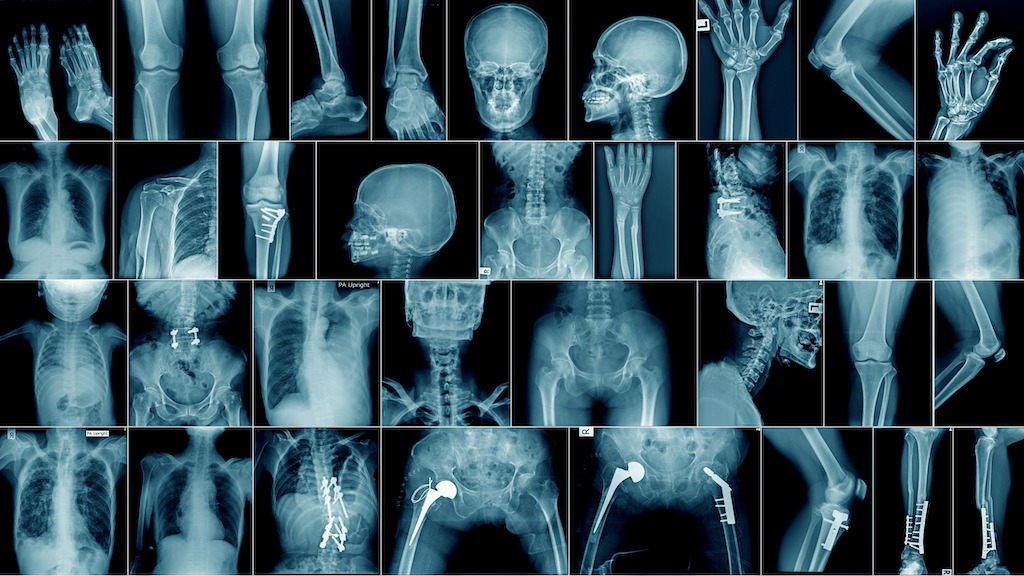Welcome again to pet Friday! Today we will discover the Belgian Shepherds. The following is from justfunfacts.com:
"The Belgian Shepherd is a breed of medium-sized herding dog from Belgium.
It is also known as the Belgian Sheepdog or the Chien de Berger Belge.
The Belgian Shepherd is a diligent, loyal, and highly intelligent dog breed.
The intense and hard-working Belgian Shepherd is extremely well-suited to become a working dog, especially in police and military operations.
The Belgian sheepdog is one of several shepherd dogs developed in Belgium.
The industrious Belgium’s terrain and climate is ideal for both livestock and dairy farming. Today the country may be known as the world’s leading exporter of milk chocolate, but at one time, Belgian farmers were focused on cattle herding…as well as the breeding of herding dogs.
In fact, there were once eight varieties of shepherd dogs that were unique to Belgium. These dogs were officially classified for the first time in the 1890s, and today there remains the Belgian Sheepdog, Tervuren, Malinois, and Laekenois, which are all anatomically identical but with coats that vary in terms of texture, color, and length.
By the turn of the 20th century, the versatility and work drive of Belgian Sheepdogs were becoming known beyond the pastures of Belgium. Paris and New York used Belgian Sheepdogs as police dogs in this era. Customs agent employed them on border patrols, rooting out smugglers. During World War I, they distinguished themselves as messengers, ambulance dogs, and freighters of heavy gunnery. Belgian Sheepdogs reprised their role as war dogs during the Second World War.
The Belgian Sheepdog Club of America was formed in 1949, and since then this noble breed has done it all: show dog, athlete, police officer, soldier, service dog, searcher and rescuer, watchdog, and tireless backyard tennis-ball fetcher.
In 1956 the current breed standard was adopted and it specified the four varieties known today.
The Belgian Shepherd is a an athletic breed with a body built for endurance, they typically stand between 56 and 66 centimetres (22 and 26 in) with bitches being on average 4 centimetres (1.6 in) shorter than dogs, they usually weigh between 20 and 30 kilograms (44 and 66 lb) – the breed standard states the ideal height is 62 centimetres (24 in) for dogs and 58 centimetres (23 in) for bitches.
While predominantly considered a single breed, it is bred in four distinct varieties based on coat type and color.
The breed standard describes three coat varieties:
• Long-haired dogs have a long, smooth coat with short hair on their faces, ears and legs although there is long feathering on the rear of the legs, they have an abundant mane on their neck and chest, particularly long hair on the rear of their thighs and a bushy tail that forms a plume.
• Short-haired dogs have particularly short hair on the faces, ears and lower portion of their legs, short over the rest of the body and slightly longer on the neck and tail.
• Rough-haired dogs have a coat that is rough, dry and approximately 6 centimetres (2.4 in) long over the body, they have shorter hair on the top of the muzzle and legs and, unlike the other coat types, they have long hair on the face and muzzle.
The Groenendael variety is long-haired, it has a solid black double coat, the outer coat is straight and particularly long around the shoulders, neck and chest – they have short hair on the face, and well feathered legs and tail. This variety is believed to have been created in 1885 by Nicholas Rose, owner of the Château de Groenendael.
The Laekenois variety is rough-haired, its coat is fawn in colour with discreet black overlay and is harsh, dry and normally slightly tangled in appearance – it has a bristled, feathered muzzle and limited feathering
on the legs and tail. According to the breed standard, black overlay means the tips of the hair are black but not in patches or stripes such as brindle.
The Malinois variety is short-haired, it is fawn in colour with black overlay, with a charcoal-coloured face and extremities.
The Tervuren variety is long-haired like the Groenendael – its double coat is typically fawn in colour with black overlay and with black extremities, although grey with black is known – it has a ruff of long hair around the neck and feathering on the legs.
The Groenendael and Tervueren varieties have a reputation for occasionally being snappy, making them less suitable as companion dogs for children – the Laekenois, whilst considered very good with children, can occasionally be troublesome with other dogs.
The Belgian Shepherd responds well to training – they require training from an early age, particularly the Laekenois which can have a tendency to try to dominate a weaker-willed master.
The breed is very active, particularly the Malinois which may reflect its continued breeding for security roles, and they all require exercise – the breed adapts well to living indoors, although the Malinois is least suited to these environs.
In the United States the American Kennel Club considers the four varieties to be separate breeds.
An average puppy of this breed can go for $1,500, while a pedigree Belgian Sheepdog puppy can cost you upwards of $3,000."
Now that is quite a dog! This dog has done it all: show dog, athlete, police officer, soldier, service dog, searcher and rescuer, watchdog, and tireless backyard tennis-ball fetcher. And some can be good with children. I hope you enjoyed today's pick.
Reference: http://justfunfacts.com/interesting-facts-about-belgian-shepherds/
I have lost a lot of faith with the Medical Community and the Governments over the last several years, but there are a few good things that can raise above the corruption and the pushing of drugs a new approach to heal people. The following is from www.gaia.com and written by Hunter Parsons that does not involve any drug or pushing an ineffective so called vaccine that the drug company is not held accountable in any way but they use sound! The use of sound can regrow bone tissue! Here is the story:
"The future of regenerative medicine could be found within sound healing by regrowing bone cells with sound waves.
The use of sound as a healing modality has an ancient tradition all over the world. The ancient Greeks used sound to cure mental disorders; Australian Aborigines reportedly use the didgeridoo to heal; and Tibetan or Himalayan singing bowls were, and still are, used for spiritual healing ceremonies.
Recently, a study showed an hour-long sound bowl meditation reduced anger, fatigue, anxiety, and ...
Not a fan of a Defense Agency studying Anti-Gravity and other Exotic Tech, but if the commercial world and make this technology cheap that will change our world yet again. The following is about three minute read and from www.gaia.com. The below was written by Hunter Parsons:
"Wormholes, invisibility cloaks, and anti-gravity — it’s not science fiction, it’s just some of the exotic things the U.S. government has been researching.
A massive document dump by the Defense Intelligence Agency shows some of the wild research projects the United States government was, at least, funding through the Advanced Aerospace Threat Identification Program known as AATIP.
And another lesser-known entity called the Advanced Aerospace Weapons System Application Program or AAWSAP
The Defense Intelligence Agency has recently released a large number of documents to different news outlets and individuals who have filed Freedom of Information Act requests.
Of particular interest are some 1,600 pages released to Vice News, which ...
As our technology gets better we are discovering more about the history of mankind and pushing the timeline back further and further. The following article is from www.gaia.com and written by Michael Chary that discusses this new find that changes the historical timeline:
"Over the past decade, there have been a number of archeological revelations pushing back the timeline of human evolution and our ancient ancestors’ various diasporas. Initially, these discoveries elicit some resistance as archeologists bemoan the daunting prospect of rewriting the history books, though once enough evidence is presented to established institutions, a new chronology becomes accepted.
But this really only pertains to the era of human development that predates civilization — the epochs of our past in which we were merely hunter-gatherers and nomads roaming the savannahs. Try challenging the consensus timeline of human civilization and it’s likely you’ll be met with derision and rigidity.
Conversely, someone of an alternative...
Not sure if you have heard of a show on YouTube called "The Why Files". If not you should check it out it is interesting and has some humor with it on different subjects. Last weeks was on a different theory how the Universe works and how main stream Science is attempting to shut it down like is always seems to do if it goes aguest some special interest. Today it is akin to what happened to those who questioned the Earth was the Center of the Universe that main stream so called Science all believed during the Renaissance period, They called any theory that the Earth was not the Center of the Universe misinformation. Does this sound familiar today? People laughed and mocked people like Leonardo da Vinci, Nicolaus Copernicus, Georg Purbach as crack-pots, conspiracy theorists, nut-jobs and they were suppressed and even imprisoned for their radical thoughts and observations. Again it sounds like today in so many ways. In any event this is a good one to ponder and see even if a bad idea ...
Seemingly chaotic systems like the weather and the financial markets are governed by the laws of chaos theory.
We all have heard about chaos theory, but if you have not or have forgotten what chaos theory is well here you go from interestingengineering.com:
"Chaos theory deals with dynamic systems, which are highly sensitive to initial conditions, making it almost impossible to track the resulting unpredictable behavior. Chaos theory seeks to find patterns in systems that appear random, such as weather, fluid turbulence, and the stock market.
Since the smallest of changes can lead to vastly different outcomes, the long-term behavior of chaotic systems is difficult to predict despite their inherently deterministic nature.
As Edward Lorenz, who first proposed what became commonly known as the Butterfly Effect, eloquently said, "Chaos: When the present determines the future, but the approximate present does not approximately determine the future.""
You may have heard the term about chaos theory as a butterfly flaps its wings in Brazil,...
I for one have lost trust in Medical Doctors due to COVID and reflection that they seem to push pills for everything and untested so called vaccines that is using a unproven technology because the Government and the Medical Boards of the State told them to. There are a very few exceptions. Thus they do not address the key problem just prescribe more and more pills to keep you alive an sick longer for them and Big Phama to profit from you. Will AI do any better? Well that depends on what was used for the training of AI. If it also pushes pills and vaccines without question then you have the same problems noted above. However, if the AI Training includes all possible forms of treatment and they zero in on the right issues for the true problem then there is possibilities they would be way better than most of the current Medical Doctors today.
The following is from an article from interestingengineering.com and written by Paul Ratner:
"A new study looks at how accurately AI can diagnose patients. We interview the researcher, who weighs in on AI's role ...




























